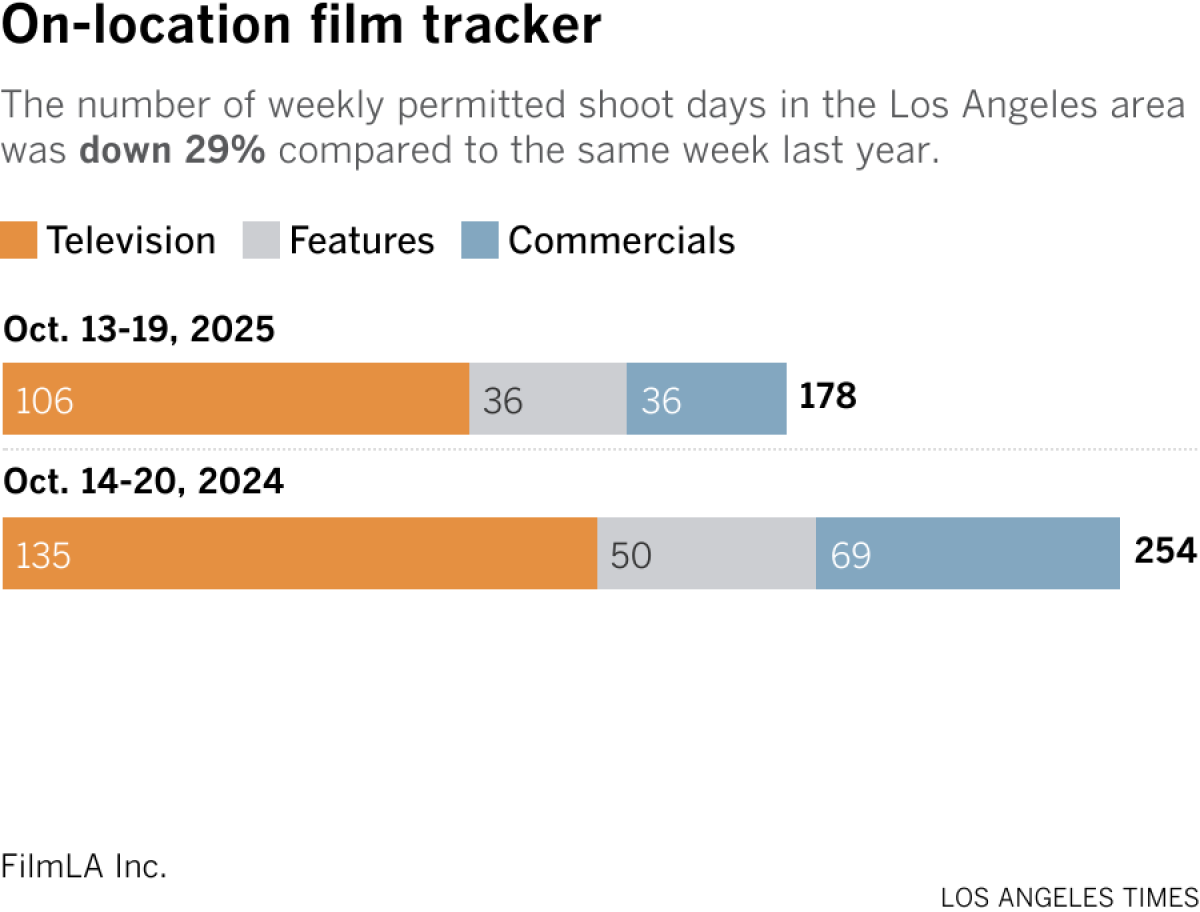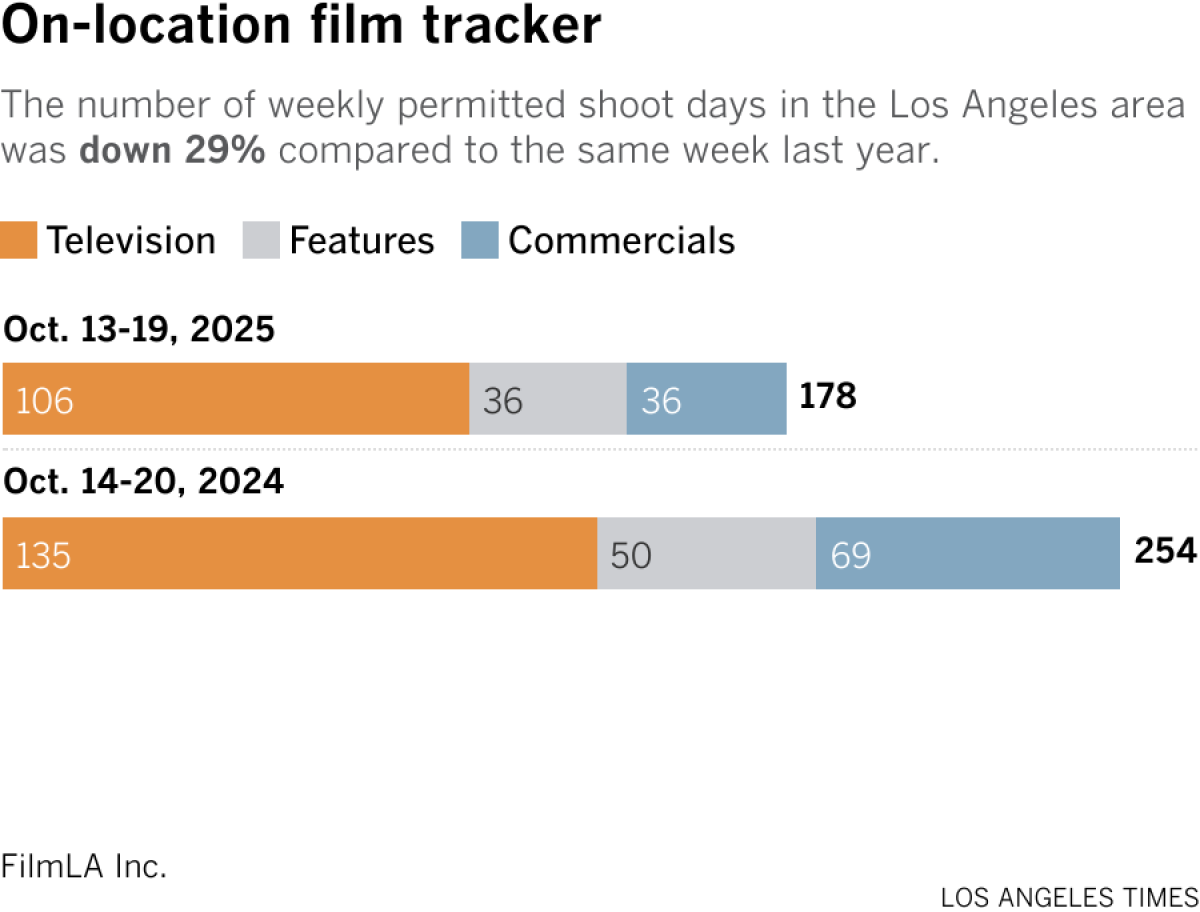Small screen giant Netflix has once again turned to the big screen, this time with the release of its latest buzzy film, “Frankenstein.”
Written and directed by Guillermo del Toro, the film opened last weekend with a limited release in 10 theaters in Los Angeles, New York and a few other cities, and will expand to more sites for a total theatrical run of three weeks. The film stars Oscar Isaac as the titular egomaniacal scientist and Jacob Elordi as the Creature (who, contrary to popular belief, is not named Frankenstein — you can thank my English major for that tidbit).
The film is getting some awards attention, particularly for the performance of the prosthetics-and-makeup-laden Elordi, and notched a solid 86% approval rating on aggregator Rotten Tomatoes. As of Sunday afternoon, Del Toro posted that the film had sold out at least 57 screenings. “Frankenstein” will debut on the streamer on Nov. 7.
Del Toro’s “Frankenstein” is just the latest in a long line of adaptations of the classic 1818 novel by Mary Shelley. From the first silent film short in 1910 to Boris Karloff’s famed turn as the monster in 1931 and the Kenneth Branagh-directed movie in 1994 that starred Robert De Niro as the creature (Branagh played Frankenstein and Helena Bonham Carter was Elizabeth Lavenza), the classic horror story has proved ripe for filmmakers’ commentary on humanity, science and nature.
In fact, “Frankenstein” has been a lifelong passion project for Del Toro, who has made an award-winning career out of analyzing and depicting monsters, from 2006’s “Pan’s Labyrinth” to 2017’s “The Shape of Water.”
For Netflix, it’s a reminder of why film remains an important, if unlikely, part of the streamer’s strategy.
It’s no secret that Netflix has built its reputation — and its streaming prowess — on the strength of its series, from “Orange Is the New Black” to “Stranger Things” and “Bridgerton.” After all, popular episodic shows keep viewers on the platform, rack up hours of engagement and help draw new subscribers to the service.
The Los Gatos, Calif., company’s embrace of movie theaters may seem surprising given its longstanding testy relationship with movie theater exhibitors and their distribution strategy.
In fact, Netflix has also long said its main goal is to offer subscribers first-run movies on its platform, directly undermining the traditional 90-day “window” between a film’s release in theaters and when it appears in the home.
Earlier this year, Netflix Co-Chief Executive Ted Sarandos poured salt on the wound when he called the theatrical business “outdated,” at a time when many chains are struggling to fill seats to pre-pandemic levels.
Yet, theaters are still important to Netflix, which releases about 30 films annually in cinemas.
One reason: the allure of Oscar glory.
For the last few years, Netflix has submitted dozens of movies for awards-qualifying runs.
It’s typical for those films to be in cinemas for about two to three weeks before showing up on the platform. (Sometimes, those theatrical showings are for marketing purposes, like the recent “KPop Demon Hunters” singalong screenings.)
Netflix has won numerous Academy Awards over the years, ranging from animated feature (Del Toro’s “Pinocchio” in 2023), supporting actress (Laura Dern for “Marriage Story” in 2020 and Zoe Saldaña for “Emilia Pérez” in 2025) and director (Alfonso Cuarón in 2019 for “Roma” and Jane Campion in 2022 for “The Power of the Dog”).
Best picture, however, has continued to elude the company.
Theatrical releases also help the streamer to attract filmmakers and build relations with key talent. For instance, Netflix’s upcoming “Narnia” film from Greta Gerwig will get a two-week Imax run next year. Netflix previously ran Del Toro’s well-received horror anthology series “Cabinet of Curiosities.”
And while serial narratives may reign supreme, to maintain subscribers, you need other kinds of content to keep it fresh. That’s where movies (and live events) come into play.
As consumers decide which streaming services they can’t live without, a platform that has a little bit of everything has an advantage.
“Having a good mix of movies and serial content is really important,” says Alicia Reese, senior vice president of equity research in media and entertainment at Wedbush Securities. “A lot of people use this as their one and only subscription.”
In other fronts, is the fight over OpenAI’s new Sora 2 dying down? Maybe not, but there are signs of easing tensions.
On Monday, United Talent Agency, SAG-AFTRA, Creative Artists Agency, Assn. of Talent Agents, actor Bryan Cranston and OpenAI released a joint statement noting that Cranston’s voice and likeness was able to be generated “in some outputs” without consent or compensation when the tool was launched two weeks ago in a limited release.
“While from the start it was OpenAI’s policy to require opt-in for the use of voice and likeness, OpenAI expressed regret for these unintentional generations,” the statement said. “OpenAI has strengthened guardrails around replication of voice and likeness when individuals do not opt-in.”
Cranston, who brought the issue to SAG-AFTRA’s attention, said he was “grateful” to OpenAI for improving its policies and “hope that they and all of the companies involved in this work, respect our personal and professional right to manage replication of our voice and likeness.”
Stuff We Wrote
Film shoots

Number of the week

NBC News sent termination notices to 150 staffers last week, as the network struggles with declining TV ratings and ad revenue. Layoffs have been prevalent throughout the media landscape this year, but have been felt especially hard at broadcast news outlets, as audiences increasingly migrate to streaming platforms and cut the cord.
In addition to these issues, my colleague Stephen Battaglio reported that the NBC News layoffs were also attributed to the spin-off of cable networks MSNBC and CNBC. NBC News now no longer shares resources with those outlets, which will become part of a new company called Versant.
Affected employees were encouraged to apply for 140 open positions throughout the news group.
Finally …
I had to do it. With the Dodgers returning to the World Series, my colleague Jack Harris looks at the team’s season this year and how they fought through multiple injuries on the roster to eventually turn the ship around.
